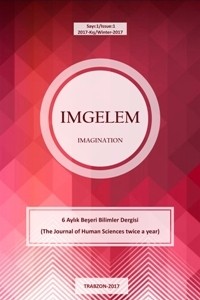BESLENME DEĞERLENDİRMESİ: KARNATA’DAKI JENE KURUBA KABILESINDEKI YETIŞKIN ERKEKLERIN KRONIK ENERJI EKSIKLIĞININ IKI YARARLI ANTROPOMETRIK ÖLÇÜMÜNÜN KARŞILAŞTIRILMASI
India has a severe health issue with undernutrition (U.N.), particularly among the underprivileged poor tribal population. The current cross-sectional study aims to evaluate the nutritional condition of 145 adult male Jene Kurubas in Karnataka and compare the two functional anthropometric indices of Chronic Energy Deficiency (C.E.D.). C.E.D. was assessed using the B.M.I. (body mass index) and the MUAC (mid-upper-arm circumference). According to the results of the current study, chronic energy deficiency was prevalent in 53.8% of cases, and undernutrition based on MUAC < 23.0 cm was present in 48.3% of cases. According to WHO recommendations, these prevalences fall into the highly high-prevalence category (≥ 40 per cent), signifying a critical situation. The rate of C.E.D. was significantly higher (81.4%) among those with low MUAC (< 23.0 cm) than among those with a normal MUAC (≥ 23.0 cm) (18.6%). The findings of this study suggest that the Jene Kurubas tribal group was under significant dietary and nutritional stress. For surveys of the human population, particularly among indigenous people, i.e. tribes of developing countries like India, it may be more appropriate to employ mid-upper-arm circumference due to budget constraints or lack of resources and professional labour
NUTRITIONAL ASSESSMENT: COMPARISON OF THE TWO USEFUL ANTHROPOMETRIC MEASURES OF CHRONIC ENERGY DEFICIENCY IN ADULT MALE JENE KURUBA TRIBE, KARNATAKA
India has a severe health issue with undernutrition (U.N.), particularly among the underprivileged poor tribal population. The current cross-sectional study aims to evaluate the nutritional condition of 145 adult male Jene Kurubas in Karnataka and compare the two functional anthropometric indices of Chronic Energy Deficiency (C.E.D.). C.E.D. was assessed using the B.M.I. (body mass index) and the MUAC (mid-upper-arm circumference). According to the results of the current study, chronic energy deficiency was prevalent in 53.8% of cases, and undernutrition based on MUAC < 23.0 cm was present in 48.3% of cases. According to WHO recommendations, these prevalences fall into the highly high-prevalence category (≥ 40 per cent), signifying a critical situation. The rate of C.E.D. was significantly higher (81.4%) among those with low MUAC (< 23.0 cm) than among those with a normal MUAC (≥ 23.0 cm) (18.6%). The findings of this study suggest that the Jene Kurubas tribal group was under significant dietary and nutritional stress. For surveys of the human population, particularly among indigenous people, i.e. tribes of developing countries like India, it may be more appropriate to employ mid-upper-arm circumference due to budget constraints or lack of resources and professional labour.
___
- Bose, K. (1996). Generalized Obesity and Regional Adiposity in Adult White and Migrant Muslim Males from Pakistan in Peterborough, Journal of Royal Society and Promotion Health, 116, 161-167.
- Bose, K., Chakraborty F. (2005). Anthropometric Characteristics and Nutritional Status Based on Body Mass Index of Adult Bathudis: A Tribal Population of Keonjhar District, Orissa, India, Asia Pacific Journal of Clinical Nutrition, 14, 80-82.
- Bose, K., Ganguli S., Mamtaz H. et al. (2006). High Prevalence of Undernutrition among Adult Kora Mudi Tribals of Bankura District, West Bengal, India, Anthropological Science, 114, 65-68.
